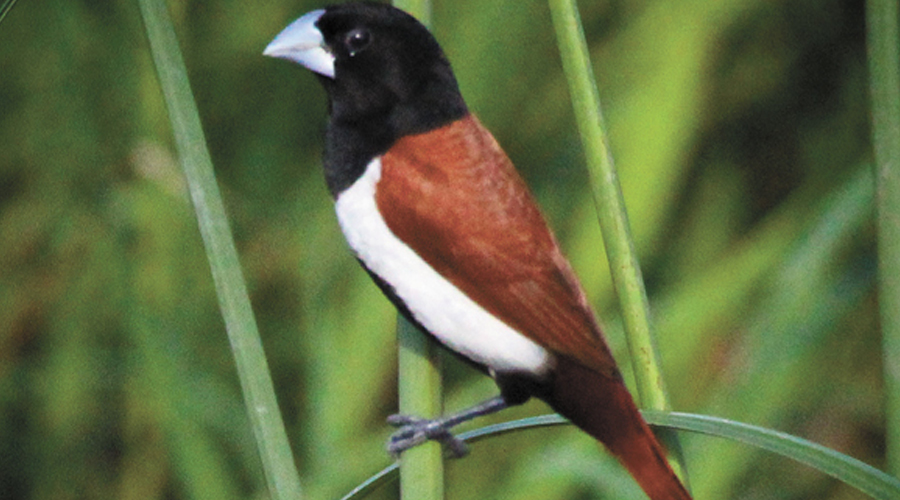Zitting Cisticola. Most people would find it difficult to put a face to that name. Frankly, so did I. The lockdown had got me hooked to social media and I joined various WhatsApp groups, mostly on wildlife and birding. In one such group, I, along with 563 others, happened to like a particular picture. I remember the picture well. Not because it was exceptionally good, but it got me hooked to what I call ‘munia mania’. One good picture posted and the city and its surroundings are abuzz with the typical questions: Where? When? How many?
Munias are small birds, typically around 10cm long. There are several types like the Scaly-breasted, Chestnut, White-rumped, Black-headed and the Indian Silverbill. But the most sought-after has to be the male Red Munia. It’s a photographer’s delight and aptly considered strikingly pretty. Another term that is often used to describe these birds is gregarious. These little, sparrow-sized birds are fond of company, sociable and seen in flocks. They are typically found in areas with tall grass and shrubs in well-watered areas.
Well, I must admit I’m technologically challenged. My kids, on the other hand, seem to be relatively comfortable handling gadgets. So, armed with a Canon EOS1300D and a 70-300mm lens, I gathered enough courage to set off on my own to try and find these elusive birds. But where? I asked a friend, a fellow birder, for directions. Bang opposite the Mishti Hub. Owl More. Go straight. You’ll reach a dead end. That’s it.
Actually, when I think back to the first visit, the dead end proved to be the beginning. Over a period of time I’ve got hooked. And if I was to believe my son, it has turned into an obsession. I’ve also learnt that for birding, the 70-300mm is good but the 150-600mm Tamron magically takes you into a whole new world. Not only is the quality of the images much better, but you can comfortably sit at a distance and truly observe the birds.
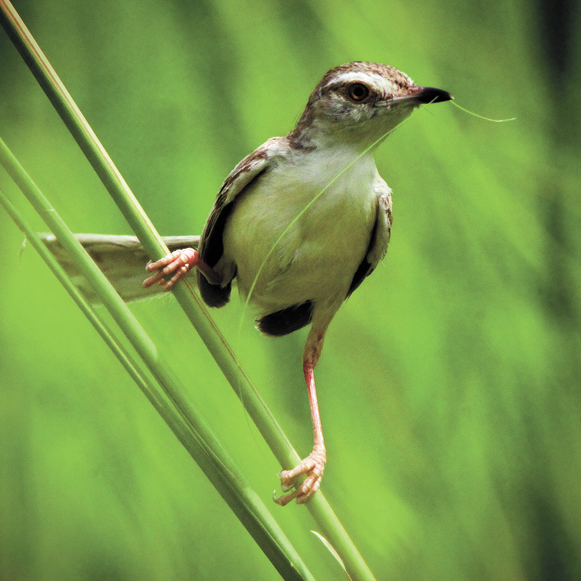
A Plain Prinia collects nesting material Pictures by the author. For more pictures visit @tarunsircar on Instagram
I almost forgot about the Zitting Cisticola. During my first visit to this hot spot, I was rather frustrated. The shorter lens could barely capture the images of the munias as they settled on the tall grass in the distance. The swampy nature of the place and the possibility of snakes meant I was restricted and had to observe the birds from a distance. The heat and humidity weren’t helping either.
Suddenly a sharp, continuous zit-zit call got my attention. I found a tiny bird, smaller than a sparrow, soaring erratically in the air, falling and rising, in a short, jerky flight only to dive into the grass and disappear. I was intrigued, fascinated actually. And then from behind me the same zit-zit call. This time I managed to get a decent shot. A lovely rufous brown bird with prominent darker streaks, also referred to as the streaked fantail warbler.
Don’t be fooled by the many wonderful pictures that you see online. It could be very misleading. Birding is a game of patience and persistence. And, of course, acquired knowledge.
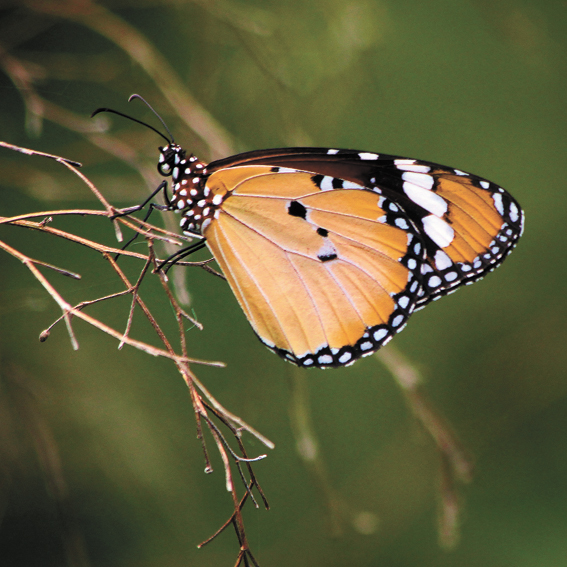
A female Plain Tiger Butterfly strikes a pose Pictures by the author. For more pictures visit @tarunsircar on Instagram
There are many books and sites to learn from, but nothing compares to a field trip. Which highlights the second question, that is ‘When?’. I’ve learnt the hard way that birding during midday in the summer months is not such a good idea. But then again the heat keeps the others indoors and allows you the freedom and solitude — something I’ve begun to enjoy.
My visits to these reedy marshes and grasslands filled with tall, feathery grass has, over a period of time, surely helped me climb the learning curve and most certainly improved my patience levels. I’ve learnt not only to spot birds and distinguish the various species, but, more importantly, to observe them. Observation leads to better understanding and, eventually, better photographs. I’ve understood the value of a good cap, a bottle of water or two, and a packet of biscuits — invaluable while you wait almost endlessly for the birds. A friend also suggested observing insects in the surroundings — dragonflies, damselflies, Banded Blister Beetles, jewel beetles and, of course, butterflies. There has never been a dull moment since.
A bird I found to be the most active in these grasslands is the Plain Prinia. I don’t find them plain in any way. In fact, I find them quite beautiful. They have been called skulkers, but if you sit still you’d find they are always up to something. I’ve grown fond of their rather insect-like, wheezy song and their distinctive call that includes various buzzing and clinking noises.
The hot summer months transform certain grass and plant species to shades of brown and pale yellow. Most of the birds, unfortunately, are similarly coloured. Hence, I carried my specs on the next trip. Unfortunately, specs and a mask are not compatible in photography. You can’t see much through fogged glasses. Thank God I was alone and could get rid of the mask.
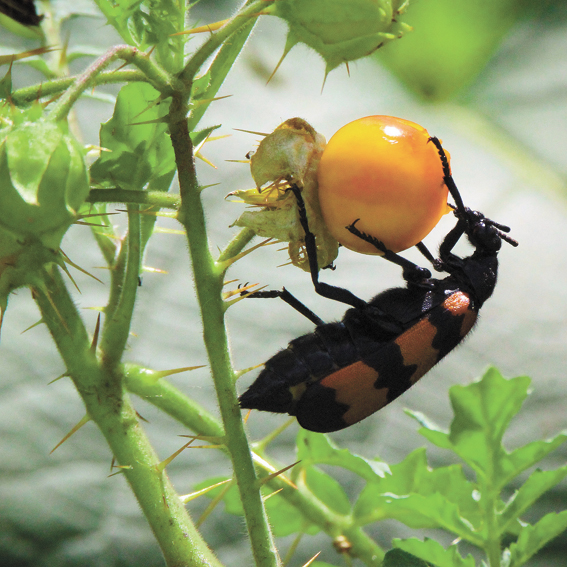
A Banded Blister Beetle sips its breakfast Pictures by the author. For more pictures visit @tarunsircar on Instagram
Armed with better vision, thanks to my spectacles and the 150-600mm lens, I was better equipped to spot more birds. The Paddy Field Pipit is a common bird seen foraging in open scrub and grassland and will willingly pose for photographs. While following a pair I accidentally stumbled upon a flock of busy Ashy Crowned Sparrow Larks. Thank God the male is well-marked with a contrasting black-and-white pattern on its face. Their ability to freeze and blend into the surroundings makes it almost impossible to photograph. Almost. Remember, I had brought my specs! I even managed to spot and photograph an elusive Bengal Bushlark.
On a particular visit, I decided to sit near a large waterbody. The sky was overcast with dark, ominous rain clouds accompanied with the occasional ear-splitting roll of thunder. The edge of the waterbody was covered in tall grass and reeds. Water hyacinth and lily spread over most of the remaining water surface. Without warning it started to pour. Luckily my car was parked very close to where I was standing and I quickly got in, ruing my luck. The downpour was brief. I had started the engine and was about to leave when I gave one last, wishful glance.
Sometimes you get lucky. Period. The cool breeze following the rains had transformed everything. A pair of Bronzed-winged Jacanas chose to display their courtship ritual while a busy Little Grebe repeatedly dived to find food. Nearby, perched on a dead branch, a Cormorant suddenly became vocal. The happiness all around was very visible and apparent.
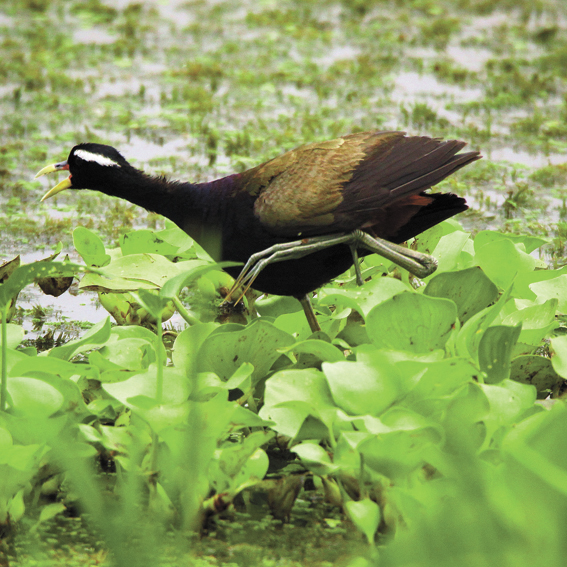
A Bronzed-winged Jacana calls out to its mate after hurriedly putting together a nest Pictures by the author. For more pictures visit @tarunsircar on Instagram
I decided to try birding early in the morning and set off around 5.30am one day. The Swedes have a word for it, gokotta (pronounced zho-kot-tah) — the rejuvenating act of rising at dawn to listen to birds sing, to immerse oneself in nature. The early morning light created a magical glow all around. The birdsongs and calls filled the air. I made my way towards the tall grass. I could hear them. Somewhere close by. I froze. Almost immediately a flock of Tricoloured Munias descended and perched nearby. Slowly I raised the camera and tried to focus. There was a problem of plenty. I initially took a picture of a group of six and then proceeded to take pictures of individuals. Four of them flew off to a small waterbody and proceeded to drink. I couldn’t believe my eyes. I kept clicking. Suddenly I felt something slithering over my shoe. I glanced down to see a huge snake had just crawled over my foot and was moving into the nearby bushes. Fear. Excitement. Opportunity. Click it fast said a tiny little voice from inside. I gathered my wits and got a few decent shots. Added to the list of essentials along with cap, water bottle, biscuits would now be adult diapers! I found out later that, thankfully, it was a non-poisonous rat snake.
I got back to the car and thanked my lucky stars. I was overjoyed. Never had I seen so many munias from so close. Or had the opportunity to photograph them. But a part of me was still unhappy. I was yet to see the male Red Munia. The magnificence of the picture I had seen on social media still haunts me. Some day. I switched on the music and ironically the U2 song — Still Haven’t Found What I’m Looking For — started playing. I couldn’t help but laugh. I will find it, I promised myself.

